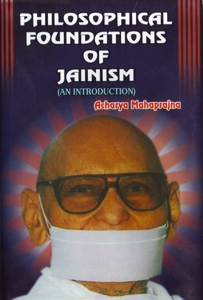The world around us is composed of two fundamental categories of substances—Jīva and Pudgala, the former being sachetana—the existence having consciousness and life, the latter being achetana—the physical existence devoid of consciousness and life. Both of them work in unison. Now the question is: Who is the consumer and what is that which is consumed or used? Or in other words, who is the master and who is the suboridente? According to 'Sāṅkhya' philosophy 'Purusa' is the bhokta (the consumer). The Puruṣa uses the 'Prakṛti' (the pudgala). It is only the 'Jīva' which can consume or make use of the material resources of the Prakṛti. Although the 'Prakṛti' maybe medium for causing happiness, sorrow etc., but the one who experiences these feelings is no one else than the Puruṣa. If the body gets hurt, it pains. But who experiences that—none else than the Jīva.
When the question under discussion was put to Lord Mahavira, he said, "It is the 'Jīva', the sachetana, which consumes the physical substance pudgala (Ajīva). The 'Jīva' first appropriates the Ajīva (pudgala) and then consumes it. The process of consumption is in the form of five śariras, five sense-organs, mind, speech, body and breathing. The Jīva uses these powers selectively. It is the consciousness in the 'Jīva', which uses pudgala as the raw material for consumption. Only the 'Jīva' has these faculties. As per the 'Sāṅkhya' philosophy, Prakṛti (physical substance) does not have caitanya (consciousness), although it is an active agent, while the Puruṣa, despite having consciousness is non-active. In contrast to this idea, the Jain philosophy holds that the 'Puruṣa' inspire of being a amūrta ātmā is also active. However, despite this difference, which is confined to reasoning only, there is similarity in the perceptions of the Jain and the Sāṅkhya philosophies so far as the status of 'bhoktā' (consumer) and 'paribhogya' (consumable stuff) is concerned.
The process of consumption has three stages—'grahaṇa', 'pariṇamana' and 'utsarga' i.e., to acquire, to transform and í o abandon. To start with, when any category of Pudgala is acquired, the transformation takes place in the same category. For example—if the pudgala skandhas are in the form of bhāṣā vargaṇā (i.e.. physical structure which has the capacity to be used as speech), after their transformation, the utsarga (abandonment) would also be in the same form, which is then communicated as a spoken language.
To sum up, we can say that the 'Jīva' has both the capabilities - sacetanatā (consciousness) and grāhakatva (capacity to acquire), whereas the pudgala is non-conscious but has the properties to get attracted (i.e., grāhyatva). This is the key to understand the interrelationship between the Jīva (the bhoktā) and the pudgala (the bhogya).
 Acharya Mahaprajna
Acharya Mahaprajna

